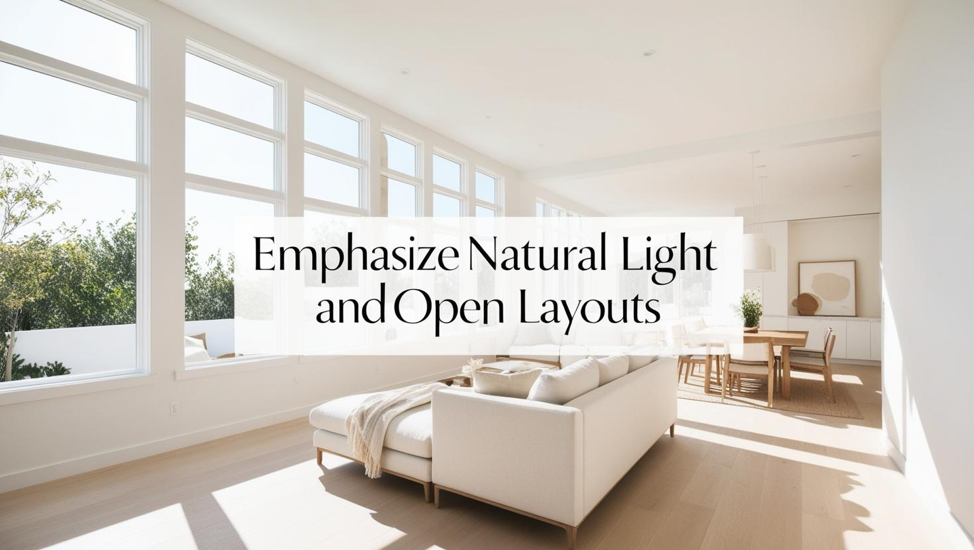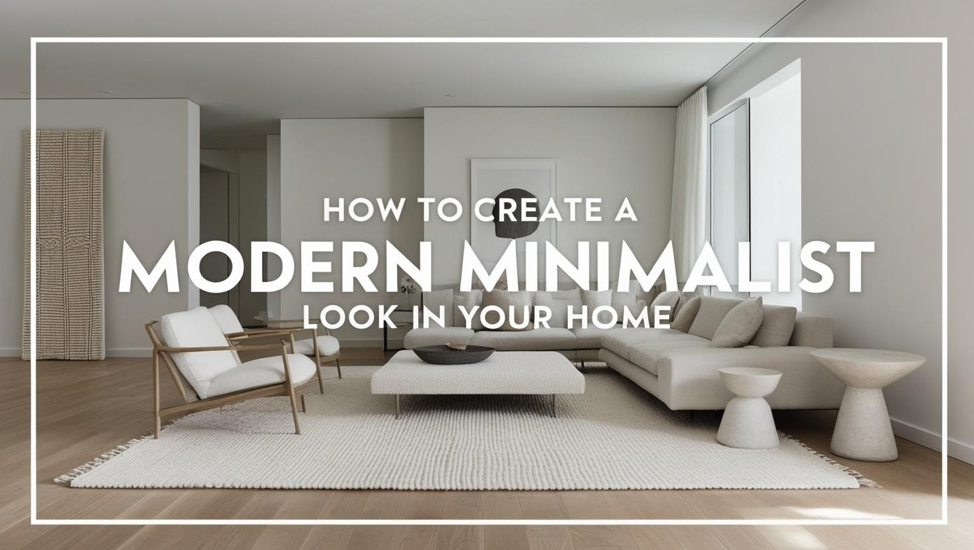✨ Quickly Summarize This Post Using AI
Minimalism has become more than an interior design trend–it is an entire lifestyle! Achieving a modern Minimalist look in your home means crafting spaces that feel open, functional, calming, and reflect your personal preferences–while still reflecting who you are as an individual. This design approach emphasizes clean lines, simplicity, and purposefulness–if you want to transform your space into an inviting and stylish retreat, then this comprehensive guide is here to assist!
1. Understand the Philosophy Behind Minimalism
Pure minimalism is the intentional living with fewer things. Minimalism as a design is designing a room that focuses on function and simplicity – everything within a minimalist home must have a purpose and contribute to the overall aesthetic that represents quality over quantity. It does not mean living in a space, but embracing quality over quantity!
2. Choose a Neutral Color Palette
Neutral colors form the framework of minimalist decor. White, beige, gray, and soft earth tones work towards creating a calming and peaceful environment. The colors allow natural light to reflect off them across the room, giving a sense of space and roominess. You can bring in depth by employing various shades of the same color and textures for visual interest.
As an example, placing soft gray walls against a natural wood floor and cream-colored furniture will produce a minimalist yet warm appearance. Artwork or minor decorative elements can provide accents, but the underlying palette should be simple and cohesive.
3. Invest in High-Quality, Functional Furniture
Select thinner, multi-functional furniture that suits the space and contributes to its balance. Steer clear of bulky or extremely ornate pieces that will dominate the room. Rather, employ the clean-lined chairs, lean profiles, and muted fabrics.
A modern minimalist living room can be made up of a low-slung sofa, a simple coffee table, and a slim shelving unit that doubles as a storage system. The concept is to have only what you need and that which adds value to the functionality of the room.
Want to add functional style to your minimalist space? Check out this beginner’s guide to putting up shelves with brackets for a simple DIY upgrade.
4. Declutter and Embrace Negative Space
One of the most critical aspects of a minimalist house is a tidy, clean, and organized space. Begin by clearing your area—donate or put away items that are not necessary. Clear surfaces and use empty spaces in the room. Not only does this enable your design aspects to shine, but it also helps to create a feeling of serenity.
Minimalism isn’t personality-less living room. Rather, select one or two significant items—a framed photo, a hand-thrown vase, or an unusual work of art—that bring personality without heft.
5. Add Warmth with Textiles and Handmade Rugs
In order to avoid making minimalist rooms look cold, bring in warm textures. Add warm and comforting details like wool throws, linen throw pillows, or drapes from natural fabrics. A rug is a great way of adding warmth and fashion.
Handmade rugs India are the perfect accessory to modern minimalist rooms since their closely woven natural fibers show subdued patterns and earth tones, perfect for modern minimalist rooms. Their handicraft introduces an element of authenticity, while their texture introduces comfort and warmth to otherwise bare, minimal spaces.
6. Incorporate Abstract Design Carpets for Visual Interest
Whereas minimalism is about simplicity, that doesn’t necessarily mean that your space must be visually uninteresting. Abstract Design Carpets can be the solution in creating visual texture without being minimalist in material – they tend to be composed of organic shapes, monochromatic colors, or muted Geometric motifs that add subtle interest and depth without sacrificing a clean, balanced appearance.
Positioning an abstract rug towards the back of your coffee table or in the middle of your living room will provide depth and dimension to the space without contradicting its modern look.
7. Emphasize Natural Light and Open Layouts

Lighting is a fundamental element of minimalist interiors. Maximize natural light by minimizing window treatments and using sheer curtains or blinds that allow daylight in instead of blocking drapes that close it out completely and hinder visual space.
Open floor plans also support the minimalist philosophy by eliminating unnecessary barriers and providing a sense of continuous flow between spaces. Where possible, eliminate non-load-bearing walls or add open shelving to promote flow and connection between them.
8. Choose Thoughtful, Minimalist Decor
In terms of decor, the fewer items, the better. Select a few quality pieces that are in keeping with your style, but don’t use too many of them. Use materials like glass, metal, ceramic, or raw wood to keep the appearance clean and natural.
Wall decoration can be simple and supplementary to the room’s color scheme. Black-and-white photos, line drawings, or subdued abstract art can contribute to the space without taking away from the overall minimalist look. A single sculptural piece or dramatic mirror can also be employed to generate interest.
9. Prioritize Storage Solutions
An organized house is the secret to the minimalist style. Spend money on clever storage and have your belongings hidden from view while keeping your surfaces free. Floating shelves, storage beds, built-in cupboards, and multi-functional furniture (storage ottomans) are all the optimal means of staying organized while still having your aesthetic.
Label boxes, use drawer dividers, and declutter every week so that your space stays intentional and clutter-free.
10. Create a Cohesive Flow Throughout the Home
Lastly, be consistent in every room of your house. Since each room can have its purpose and personality, having a unifying design language with consistency will produce an effortless, cohesive feel. Use consistent materials, colors, and design motifs throughout the house to develop unity.
A general continuity, like repeating Handmade Rugs India everywhere or an iterative pattern of abstract design area rugs, can unify distinct areas and re-emphasize your minimalist aesthetic.
Conclusion
Designing a contemporary minimalist home is an art of restraint, intention, and imagination. Prioritizing quality over quantity, using neutral colors, and adding natural textures and personal pieces, you can design a living space that is both chic and peaceful. Emphasizing aspects like Indian handmade rugs and thoughtfully positioned abstract design carpets can create depth in your interior without diminishing the absence of clutter and elegance of minimalism. Remember, however, that minimalism is never eliminating personality from your home—it’s making thoughtful decisions regarding what really counts to you. Once each and every thing in your home has been chosen intentionally, your home exudes thoughtful living.



